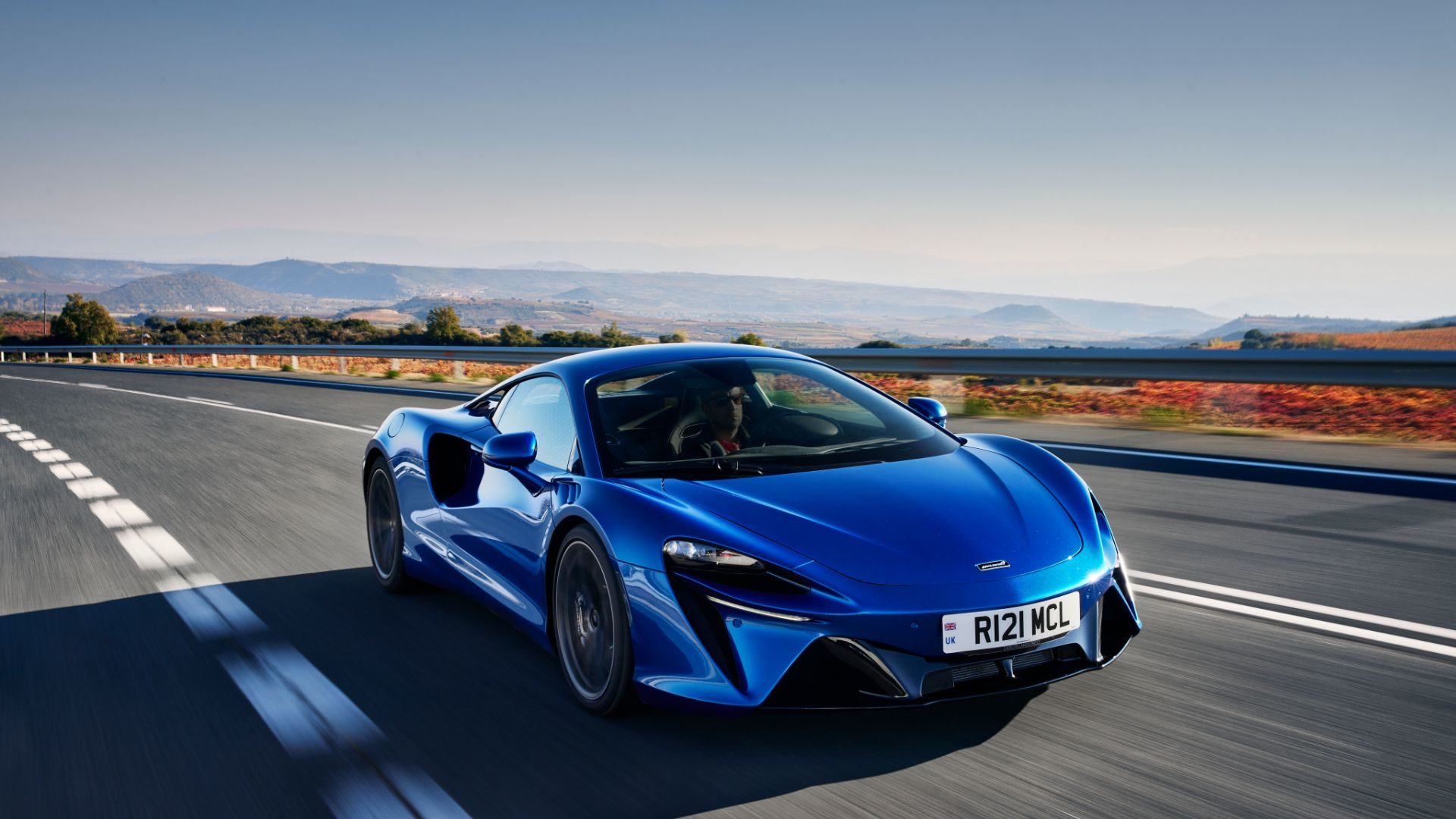
All hail the superheroes of the automotive world. At a time when electrification, autonomous tech and creeping surveillance threaten all we love about driving, these cars are beacons of brilliance.
The best supercars of 2024 include some familiar names, such as Ferrari, Lamborghini and McLaren. But there’s also room for a very fast Ford, along with two versions of the Porsche 911. All are currently available to buy – if you have the means and, in some cases, a place on the waiting list – and every one will make you love driving all over again. Yes, even on the daily slog to the office.
Our top 11 supercars (because choosing 10 was just too difficult) are presented in alphabetical order.
Aston Martin DBS
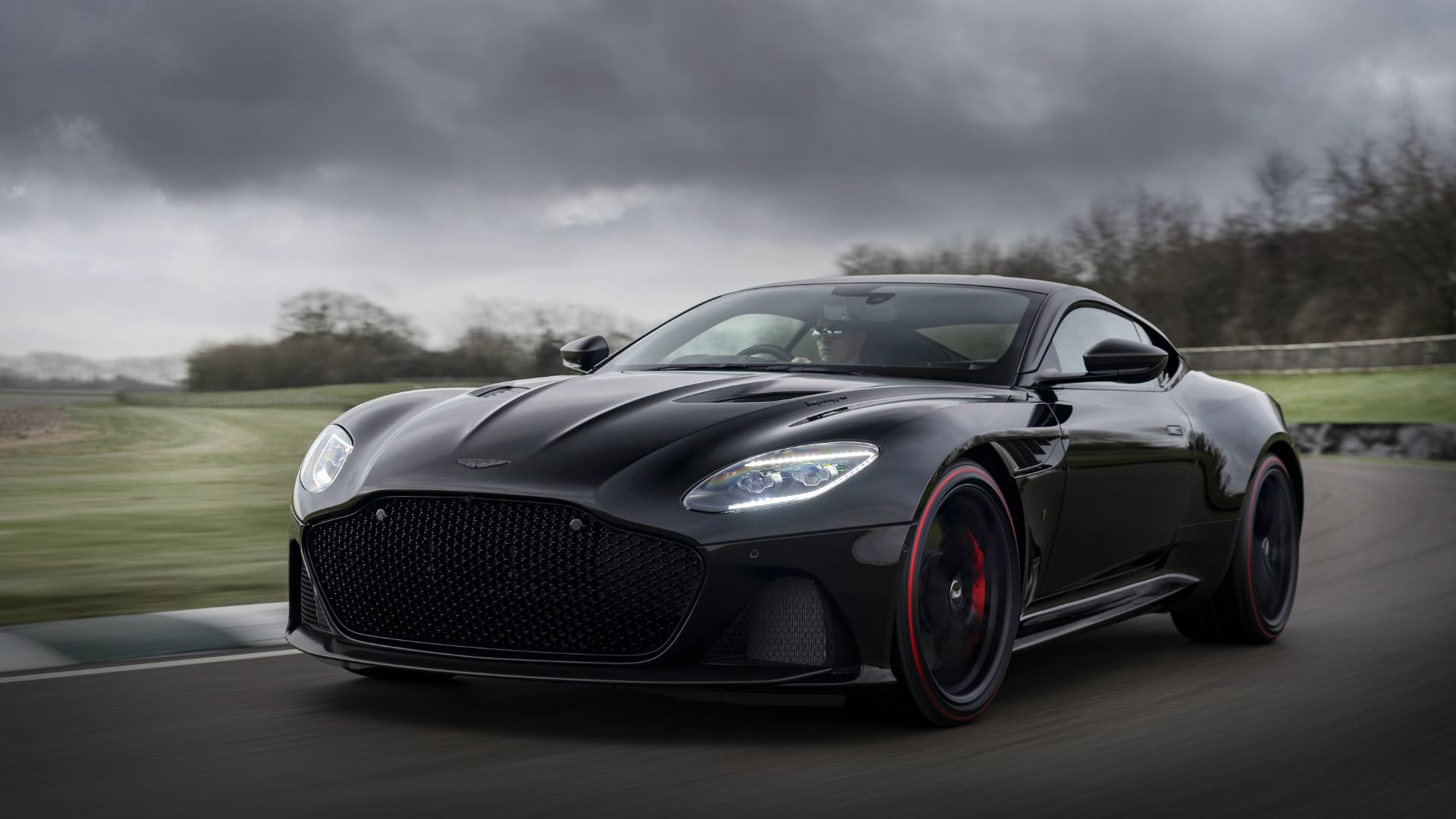
We were tempted to nominate the newer Vantage F1 Edition, but there’s something elemental about the DBS (née DBS Superleggera). Thanks to its bombastic 5.2-litre twin-turbo V12, there can be few finer ways to tackle a cross-continental road trip. That’s assuming you can live with its 22.9mpg thirst (and if you’ve bought one, you undoubtedly can).
With 725hp and 663lb ft of torque, Aston Martin’s brawny super-GT will hit 62mph in 3.4 seconds and reach a top speed of 221mph. It even has four seats, so you can scare the kids silly.
We said: ‘What 663lb ft feels like on the road is harder to define. It means effortless progress, aural refinement and the ability to drive almost everywhere in fourth gear. Oh, and acceleration that feels like a spade to your solar plexus. The DBS is utterly relentless. Its torque curve is more of a plateau, peaking at 1,800rpm and remaining flat until 5,000rpm: a huge wodge of mid-range wallop that’s both hilarious and hugely addictive. I can’t imagine ever tiring of it.’
Read our Aston Martin DBS review
Ferrari F8 Tributo
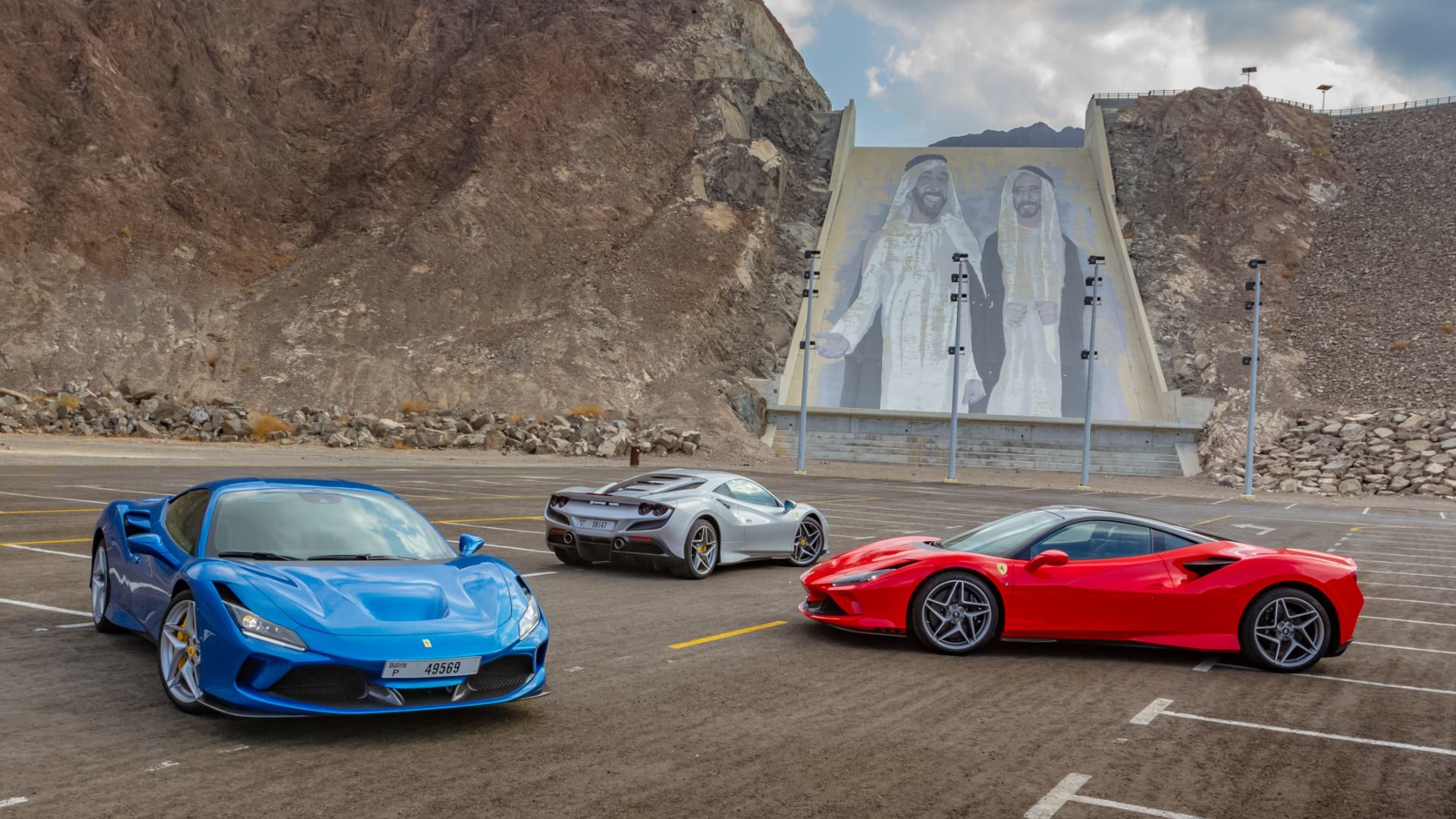
We suspect Ferrari’s new 296 GTB would have earned a place here, had we driven it. However, the F8 Tributo – which remains on sale alongside its V6 hybrid sibling – certainly doesn’t look like a poor relation. Its name pays tribute to Ferrari’s turbocharged V8 – voted one of the finest engines of the past 20 years. Here, it produces a mighty 720hp and feels eye-poppingly fast. Like, 0-62mph in 2.9 seconds fast.
On the road or track, few cars offer the same depth of feel, feedback, precision and confidence. The F8 Tributo is deeply satisfying to drive, and a testament to the degree of engineering development by Ferrari.
We said: ‘Counterintuitively, it has more downforce, but is 10 percent more aerodynamically efficient: it’s slipperier through the air, but more planted onto the road. The technical details of all the work done to the F8 Tributo’s aerodynamics are mind-boggling, but the confidence you immediately feel is proof it all works.’
Read our Ferrari F8 Tributo review
Ferrari 812 Superfast
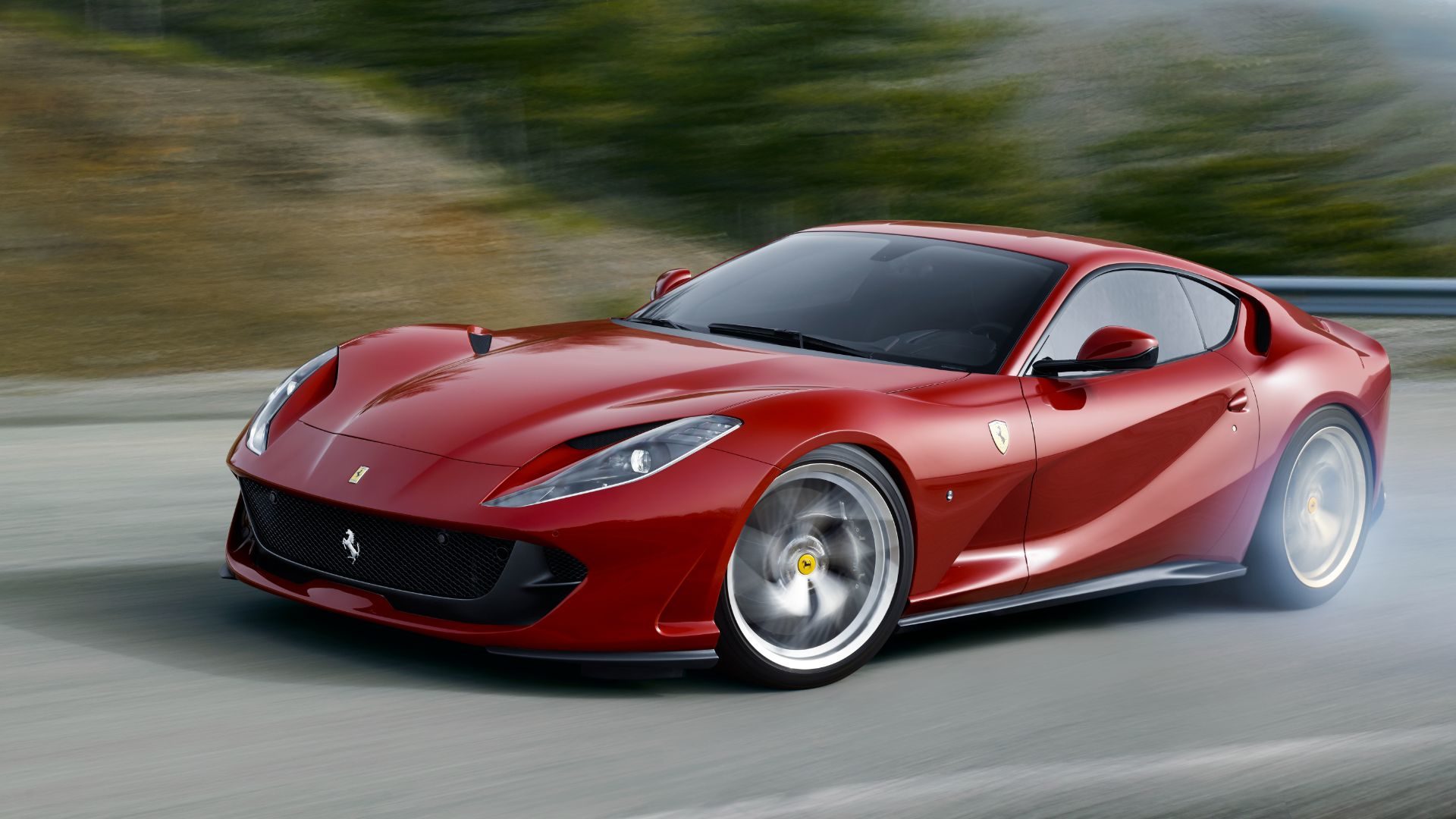
With the Lamborghini Aventador bowing out imminently, the 6.5-litre engine in the Ferrari 812 Superfast will be the only naturally aspirated V12 in production. It’s a fabulous, all-consuming thing. No superchargers, turbochargers or electric motors: just a ravenous hunger for revs.
The 812 isn’t as plush as a Bentley Continental GT, but it’s comfortable and practical enough to cover hundreds of miles at superfast speed. A 0-62mph time of 2.9 seconds and Vmax of 211mph mean this Ferrari more than lives up to its name.
We said: ‘Turn off the motorway, find a good B-road, preferably well-sighted with some very long straights, and flick the manettino to Race mode. Now Mr Hyde comes out to play.
‘The Ferrari reacts with violent acceleration, barely contained wheelspin and a feral howl that freezes the blood. Opportunities for full throttle are frustratingly rare – even on dry tarmac – but cresting that V12 wave is something you’ll never forget.’
Read our Ferrari 812 Superfast review
Ford GT
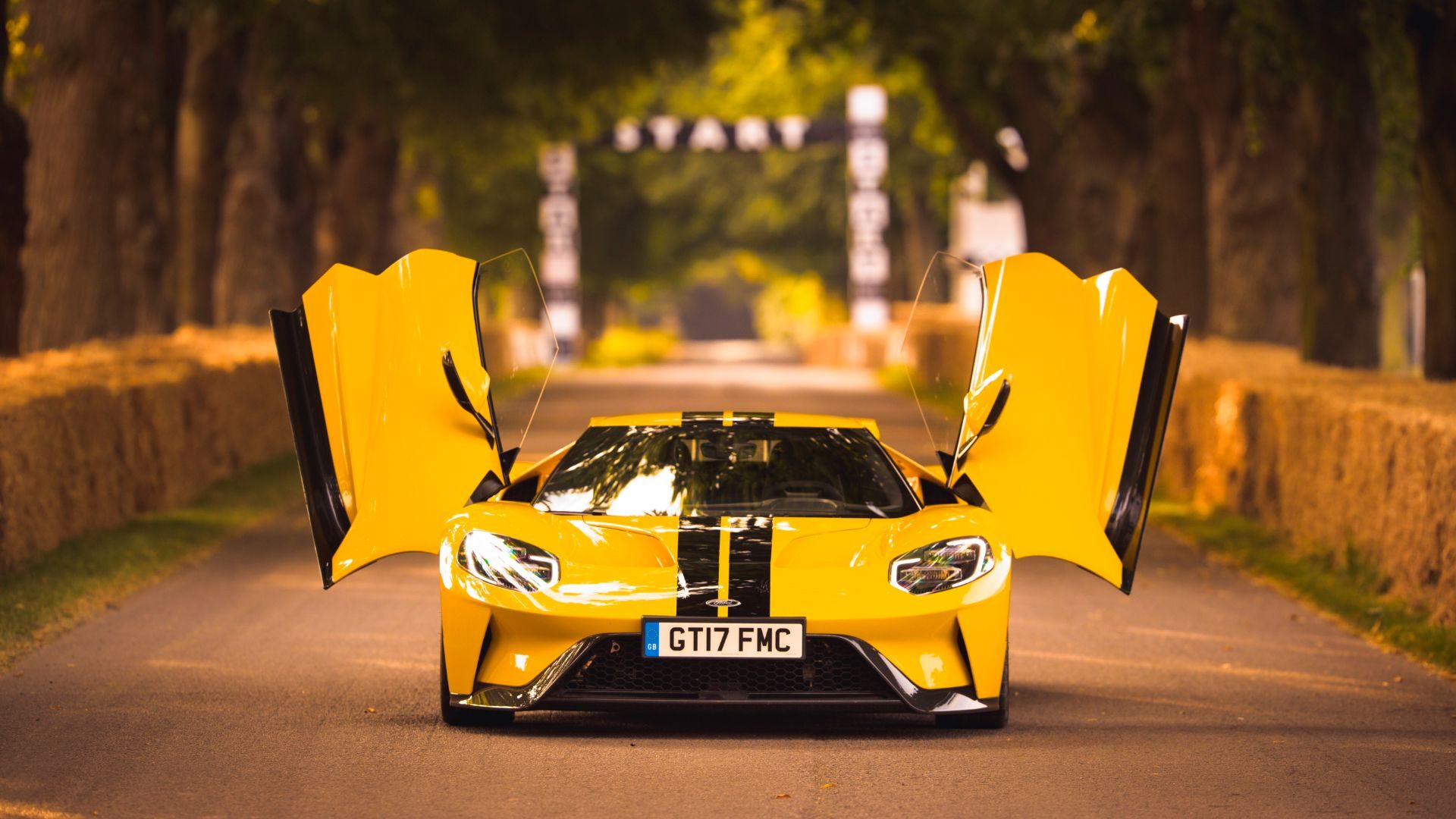
This homage to the legendary GT40 of the 1960s is brutally quick, helped in no small part by the fact that it weighs little more than a new Ford Focus. It also looks sensational, combining classic curves with sleek flying buttresses and afterburner exhausts (plus a pair of go-faster stripes for good measure).
More than just a cliched racing car with number plates, the Ford GT also rewards on the road. Extensive use of carbon fibre, scissor-style doors and 656hp are the ingredients for an incredibly exotic supercar. The fact that it wears a Ford badge only makes it cooler in our eyes.
We said: ‘It responds like a race car. Anti-lag technology keeps the thrust coming, while the dual-clutch gearbox never pauses for breath. Its suspension is taut and nailed-down, its steering telepathically direct. Switch into Track mode and the whole car drops by 50mm, but even in Normal it feels fiercely focused.
‘However, while its sheer speed intimidates, its balanced, cohesive chassis does not. By the time my brief session comes to an end, I’m convinced I could win Le Mans’.
Lamborghini Huracan Evo RWD
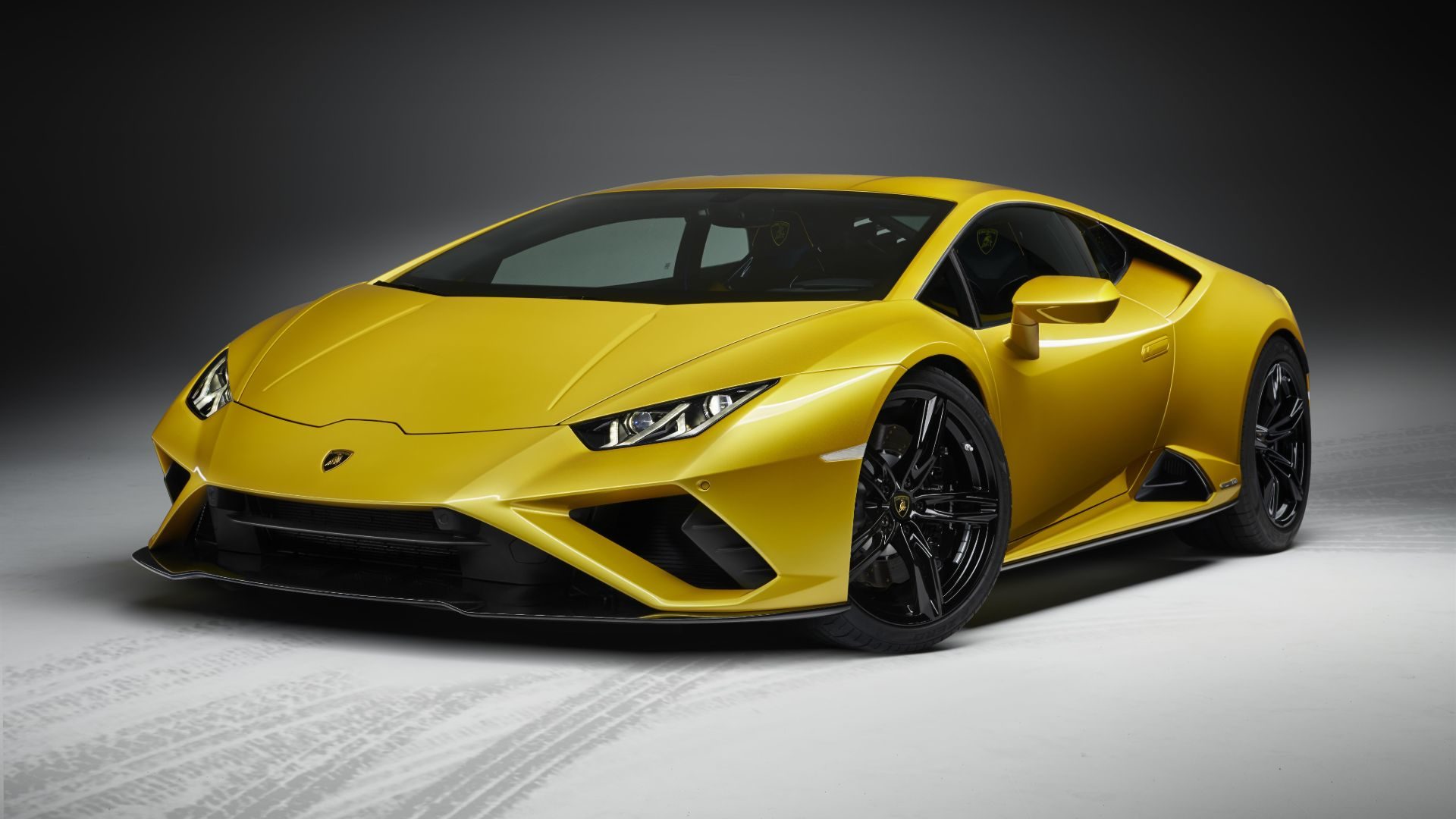
When we first drove the rear-driven Huracan, we declared it the best Lamborghini you can buy. The new Huracan STO (see our next choice) has given us cause to think again, but the entry-level RWD is certainly better value. Driven in isolation, you’d never want for more.
While the RWD’s 610hp 5.2-litre naturally aspirated V10 is 30hp down on the standard Huracan Evo, the lack of front driveshafts means it’s also 33kg lighter. Crucially, it feels more alive and athletic. You might be going slower, but the RWD feels faster. For the record, the 0-62mph sprint takes 3.3 seconds and top speed is 202mph.
We said: ‘With only two driven wheels, the RWD is a tricky prospect. You feel the car move around in corners, its steering more nuanced and throttle-dependent, its handling edgier and more exuberant. It rewards commitment and demands respect, particularly on damp roads. On a track, it would be an absolute hooligan.’
Read our Lamborghini Huracan Evo RWD review
Lamborghini Huracan STO
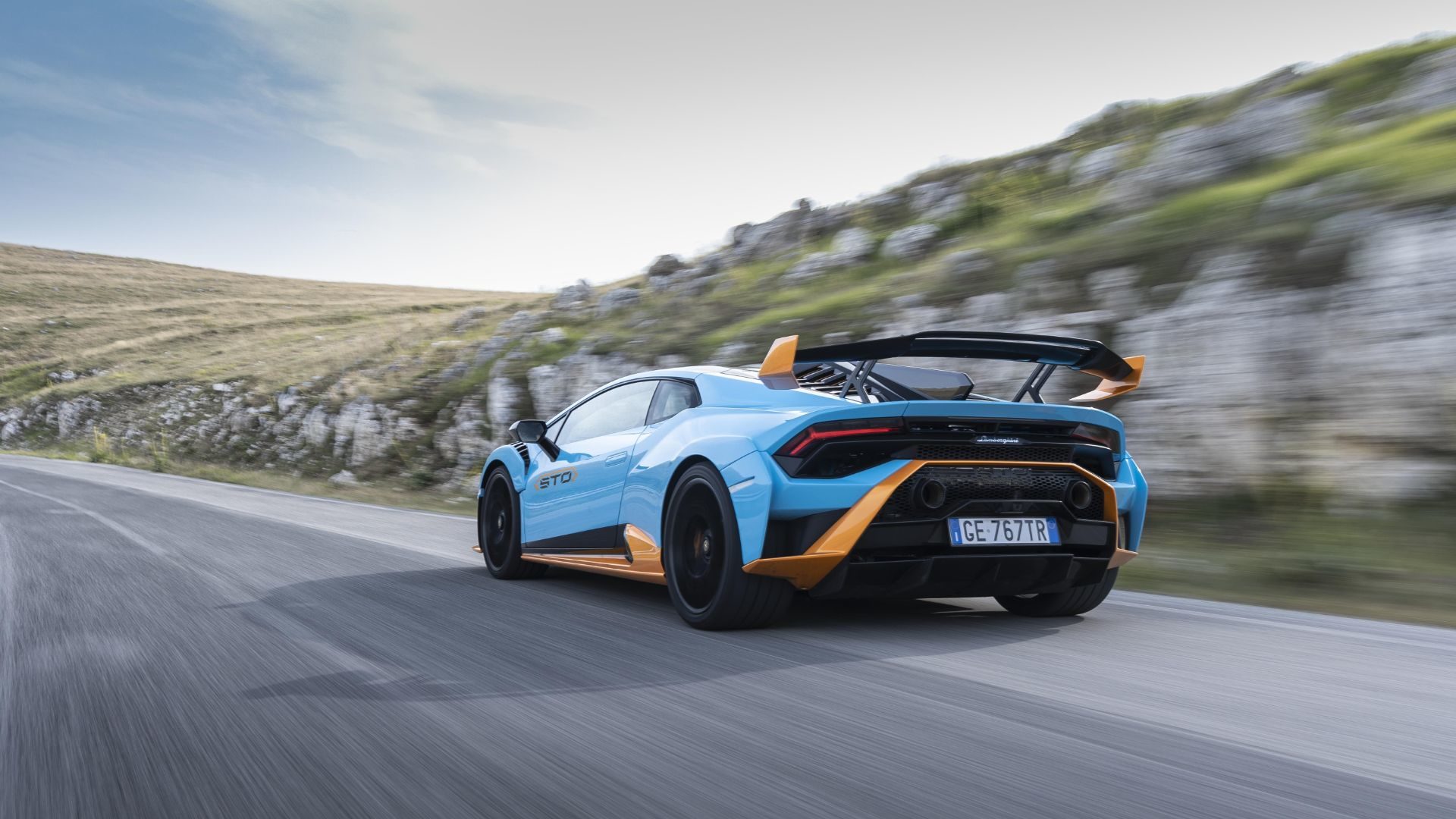
It may celebrate its 10th birthday in 2024, but there’s absolutely no chance of the Huracan growing old gracefully. Indeed, this ‘junior’ supercar only becomes more outrageous and exhilarating. The track-focused STO is the Huracan turned up to 11, with lightweight carbon panels and aggressive aero – not to mention a ferocious 640hp V10. Think of it as a road-legal version of the Super Trofeo racer.
A £260,000 price tag elevates the STO into the realms of even more powerful machines, such as the Ferrari 296 GTB and McLaren 765LT. However, with a waiting list that stretches well into 2024, the appeal of this ultimate Huracan is impossible to ignore. Find the right road (or racetrack) and we reckon it’s the most exciting new supercar of all.
We said: ‘Unlike certain Huracans of the past (particularly pre-Evo models), the STO’s chassis no longer feels like a supporting act. Its fixed-ratio steering is hyper-alert but unerringly precise, while its mighty Brembo CCM-R brakes inspire real confidence.
‘In default STO mode, the magnetic dampers also keep the car utterly nailed-down, yet still pliant enough for broken British blacktop. Trofeo mode is best reserved for the track.’
Read our Lamborghini Huracan STO review
Maserati MC20
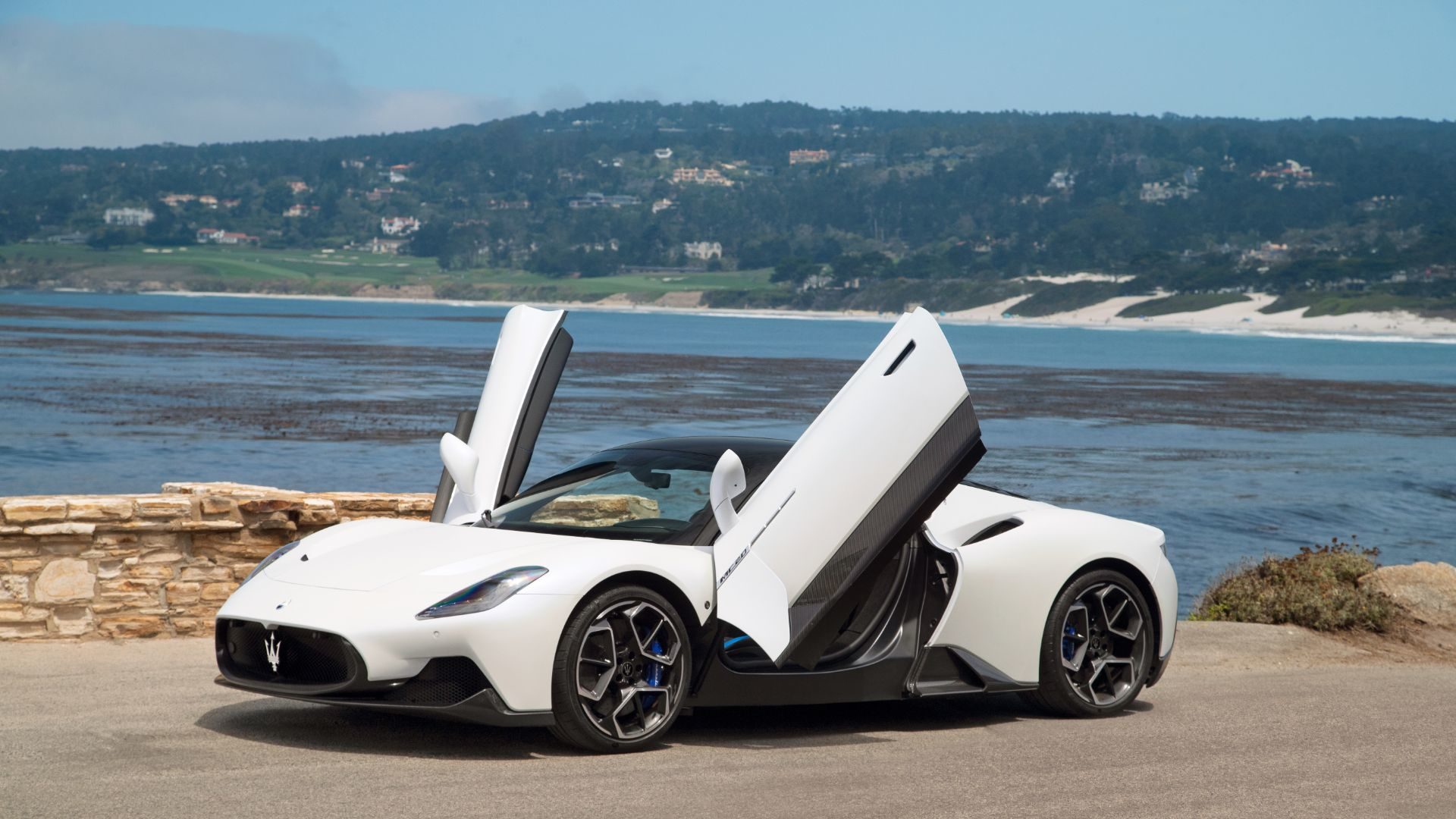
When ailing carmakers want to signal a comeback, tradition dictates that they start with a new supercar. That was Maserati’s approach – and it was right on target. With a high-tech turbocharged V6 and a carbon fibre tub, the MC20 has the Lamborghini Huracan and McLaren Artura squarely in its cross-hairs. Yet it also has a softer side, blurring the lines between supercar and super-GT.
A fully electric ‘Folgore’ version of the MC20 will follow before 2025, potentially with more than 1,000hp. That could make the 630hp of this car – good for 0-62mph in 2.9 seconds and 202mph – seem almost sedate.
We said: ‘Like the child of 2004’s outrageous Maserati MC12 – itself an evolution of the Ferrari Enzo – the MC20 looks fabulous in the flesh. Its low, pointy nose flows elegantly into a domed cockpit flanked by hungry air intakes. An F40-style Lexan rear window shows off the low-mounted engine, with Trident-shaped vents to help expel heat.
‘The MC20 Cielo convertible version, unveiled last month, might be the prettiest supercar on sale.’
McLaren Artura
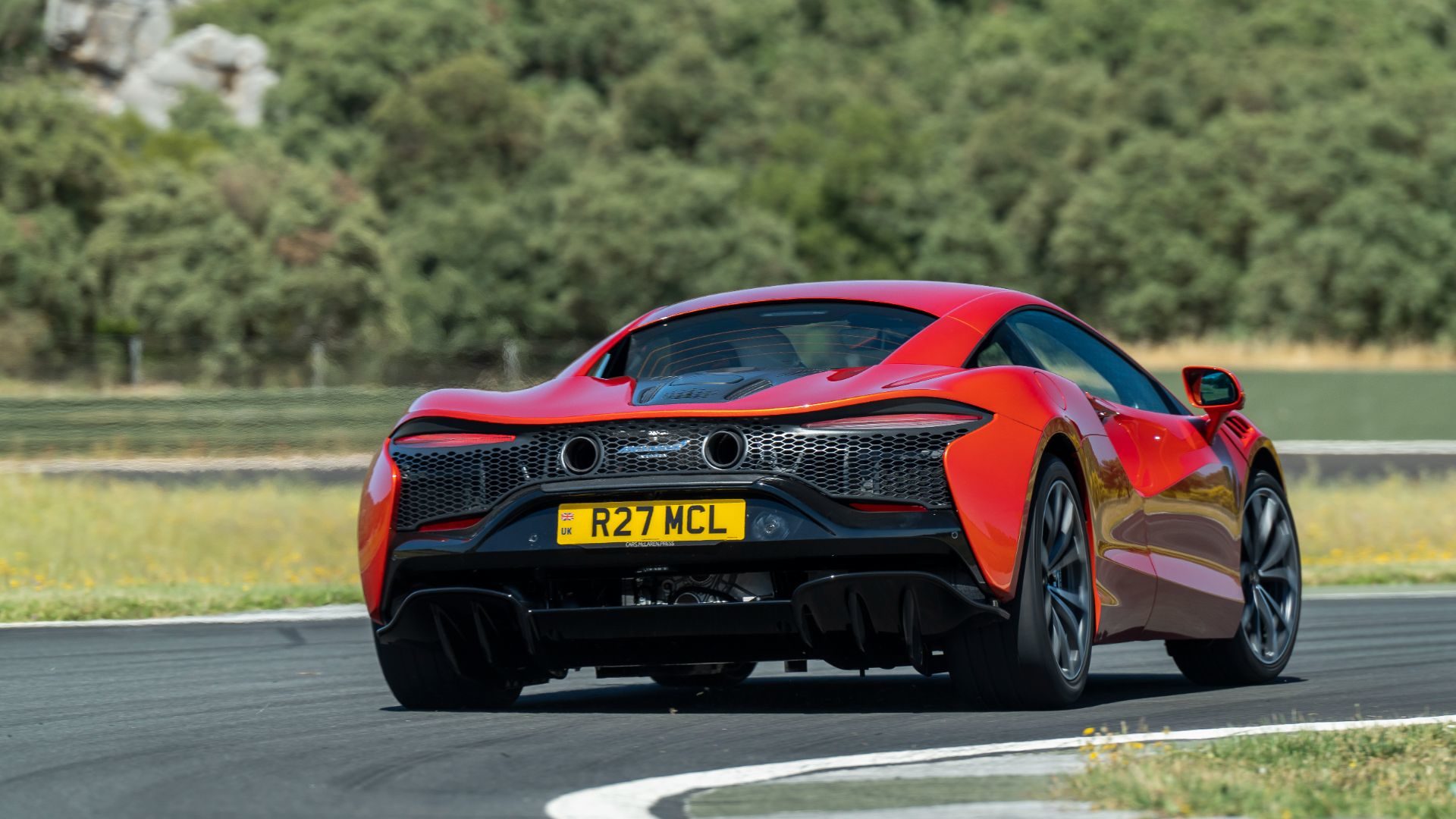
This is a hard reset for McLaren Automotive: the young company’s first completely new powertrain since the MP4-12C of 2011. The Artura’s plug-in hybrid system offers a future-proofed 18.6 miles of electric range, plus a combined 680hp once the 3.0-litre twin-turbo V6 joins the party. Zero to 62mph takes 3.0 seconds and top speed is 205mph.
Almost everything else about the Artura is new, too – including its carbon fibre chassis, rear e-differential and touchscreen media system. It’s a terrific supercar and a strong foundation for McLaren’s next decade, whatever that may bring (we’re hoping the reports of an SUV are unfounded).
We said: ‘The Artura defaults to Electric mode on start-up, allowing you to glide away in near-silence – quite a contrast to the showy theatrics of most supercars. The 95hp e-motor offers ample oomph for urban driving and will stretch to 81mph beyond city limits.
‘Sport mode is where things get exciting, though, with the engine always on and the motor providing ‘torque infill’ and razor-sharp throttle response.’
Read our McLaren Artura review
McLaren 720S
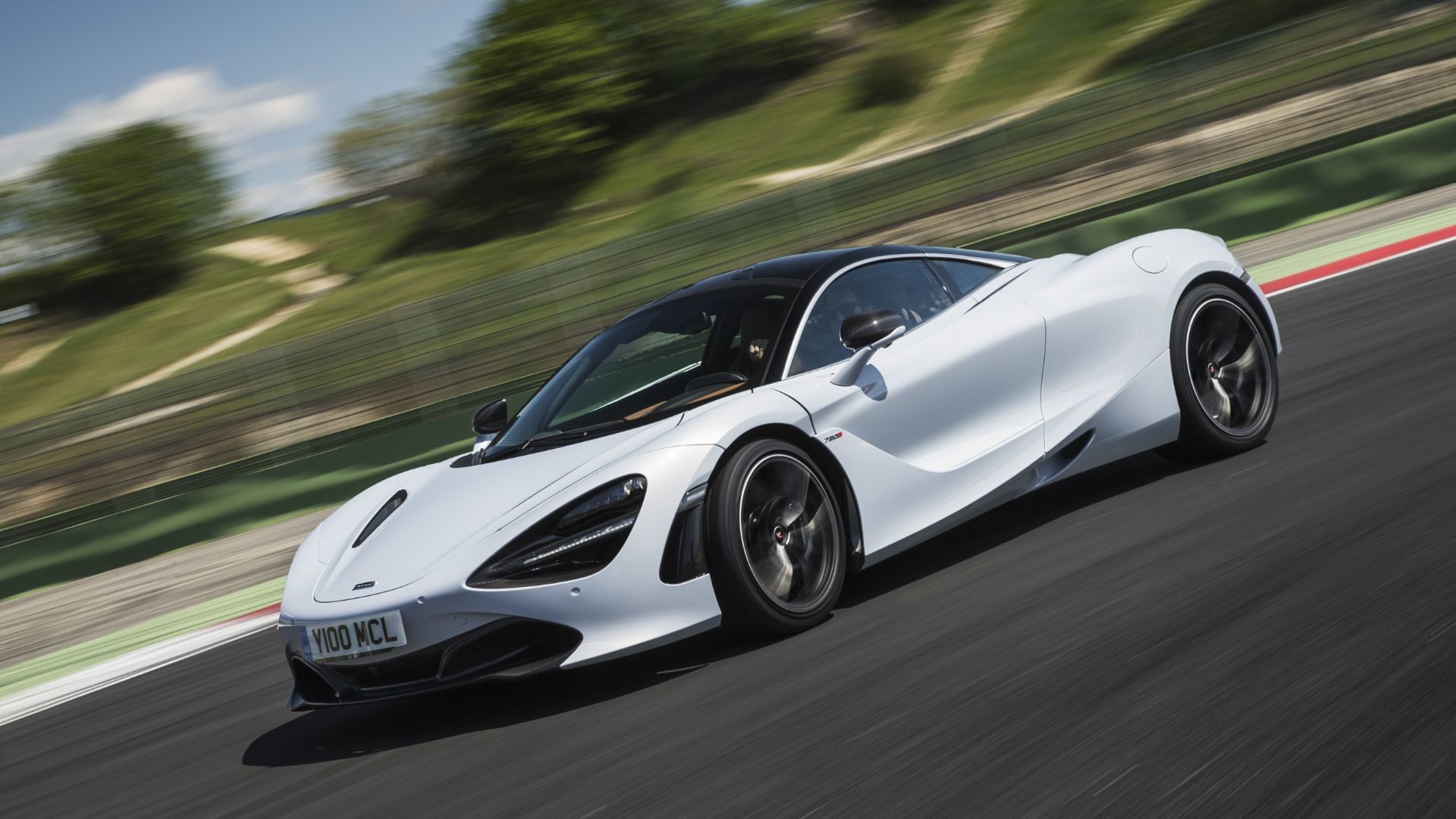
We declared the McLaren 720S ‘the new supercar benchmark’ when we first drove it in 2017. Even now, five years later, the thought of spending quality time with a 720S makes the hairs on the back of our necks stand to attention.
The Lamborghini Huracan offers more sense of occasion, but the McLaren is a supercar you could live with every day. A fairly modest footprint makes it ideal for real roads (the kind with high hedges and oncoming tractors) while a 720hp 4.0-litre V8 is plenty quick enough, thank you.
We said: ‘Special mention goes to the McLaren’s interlinked, ECU-controlled hydraulic suspension, which obviates the need for anti-roll bars. It’s far too complicated to explain here (indeed, it was the subject of a PhD thesis) – suffice to say it makes the 720S both pliant and utterly planted on challenging tarmac.’
Porsche 911 GT3
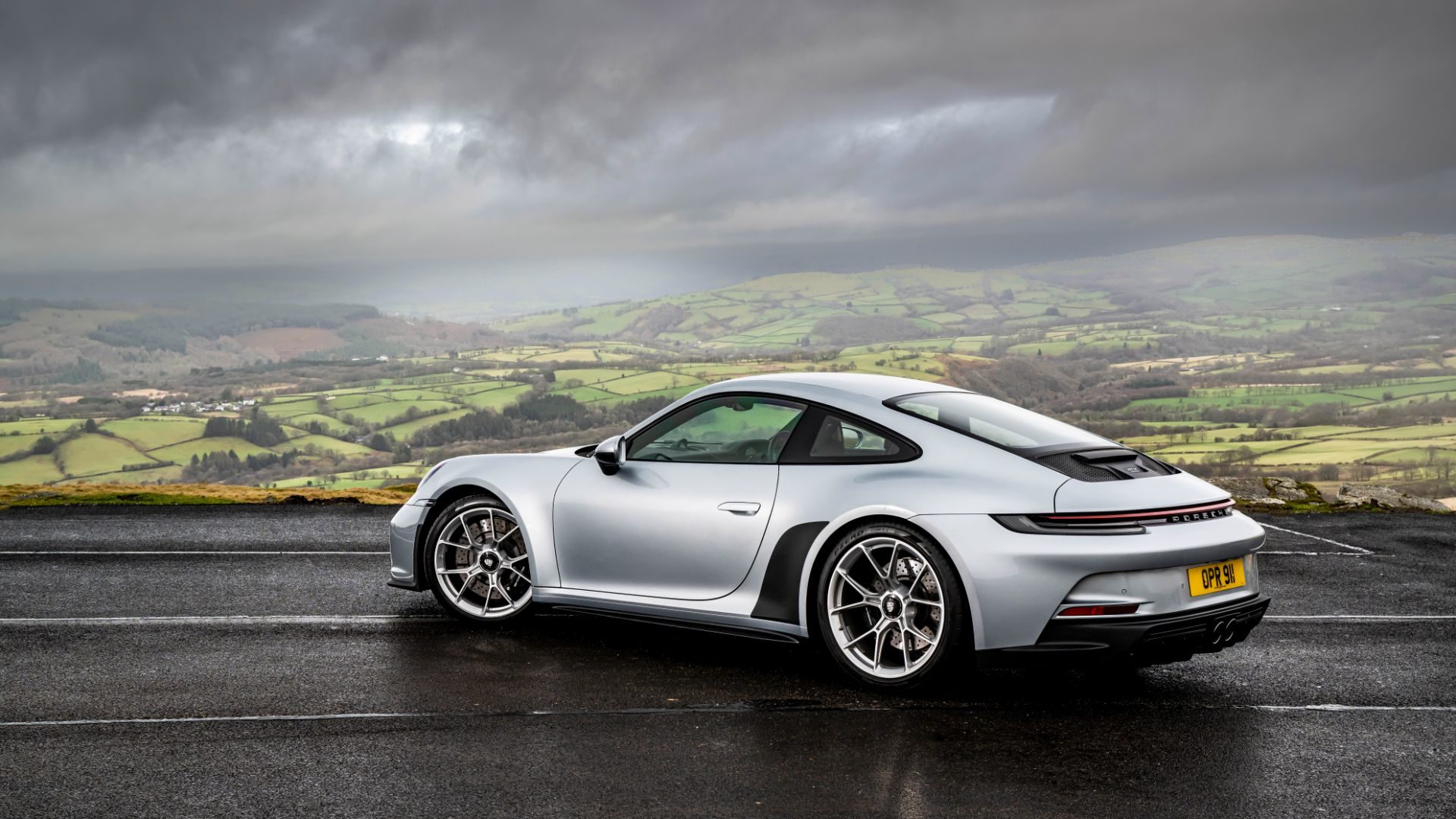
The GT3 is the most driver-focused variant of the Porsche 911. It’s also the only one available with a naturally aspirated engine – a 4.0-litre flat-six that delivers 510hp at a frenzied 8,400rpm. Factor in double wishbone front suspension – also unique to the GT3 – and you have a £130,000 supercar that, all things considered, looks a bit of a bargain.
We drove the Touring version of the GT3, which ditches the fixed rear wing for a more subtle appearance. A stone-cold future classic, it’s not the only 911 on this list…
We said: ‘Were I buying a GT3 for track days, I wouldn’t hesitate to choose PDK (and the wing, natch). Otherwise, apart from in stop-start traffic, the six-speed manual adds a welcome extra layer of interaction. Its stubby throw feels well-oiled and mechanical, blipping the throttle automatically if you don’t want to heel-and-toe.
‘Still, whether you pull a paddle or shift a stick, the Porsche’s engine is the star of the show. The fact you can buy a brand new, naturally aspirated flat-six in 2021 feels like cause for celebration in itself – let alone one that revs like a superbike and sounds like a pack of howling wolves.’
Read our Porsche 911 GT3 Touring review
Porsche 911 Turbo S
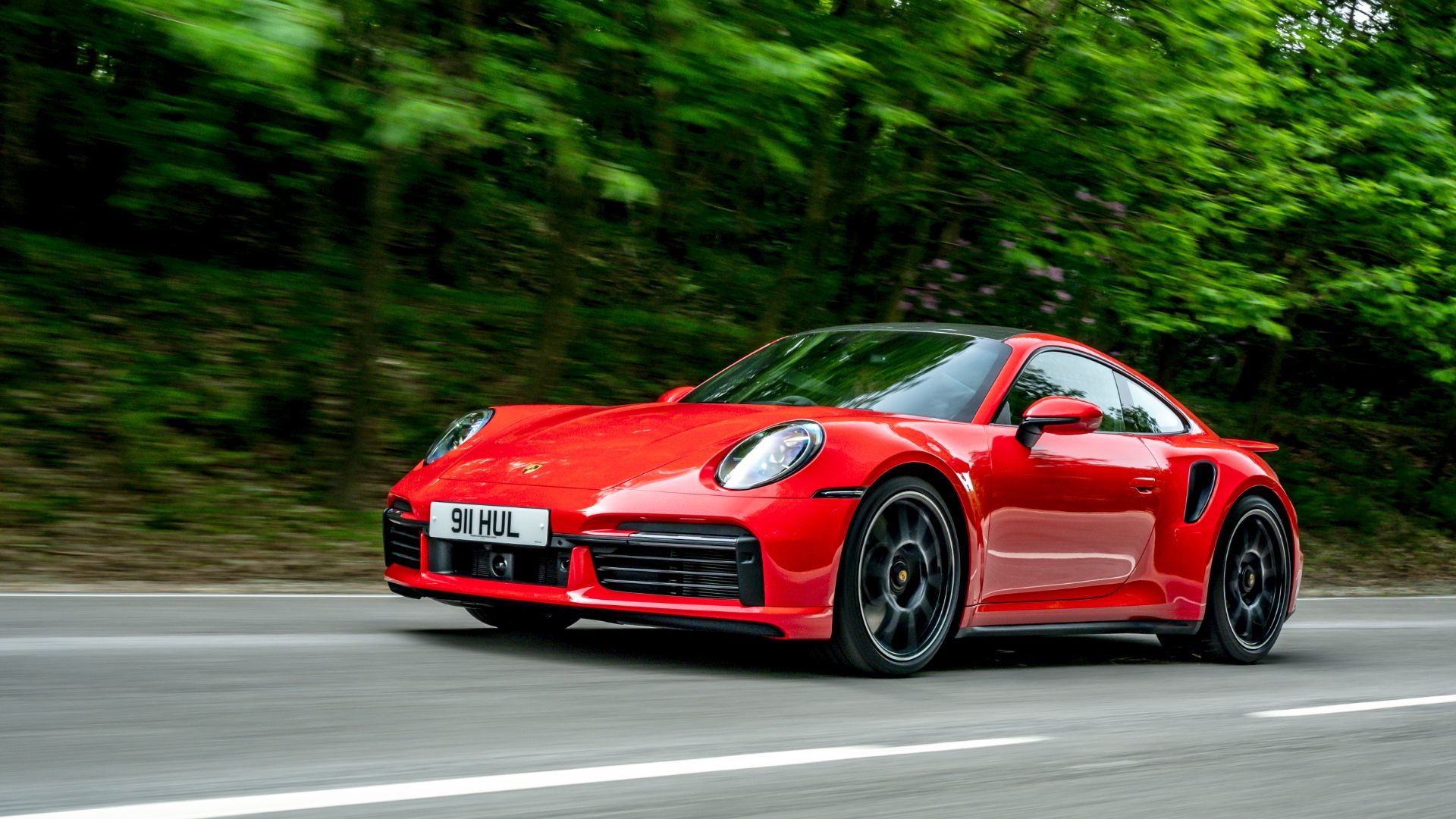
The Porsche 911 Turbo S might cost £160,000, but it offers the performance to rival some seven-figure hypercars. Its 3.7-litre flat-six develops 650hp and drives all four wheels, blasting it from standstill to 62mph in just 2.8 seconds.
Also available as a Cabriolet, the 911 Turbo S is arguably too fast for the road, but we could say the same about the other 10 cars on our list. Where the previous-generation ‘991’ Turbo felt slightly sterile, this ‘992’ version is more exuberant and engaging. But unlike the highly-strung GT3, the Turbo is a car you’d gladly drive home on a damp January evening.
We said: ‘Point-to-point, I’m not sure anything is quicker. And no rival offers greater bandwidth either. The Turbo is easygoing enough to drive every day and comfortable enough to cross Europe in a single bound. Yet it’s also a richly rewarding sports car, with nuanced steering, unflappable body control and malleable, rear-biased balance.
‘Porsche’s purist GT division lent a hand with chassis development – and it shows’.
Read our Porsche 911 Turbo S Cabriolet review
ALSO READ:
I tend to wonder if an 812 Superfast is what a Corvette would be if made by Ferrari